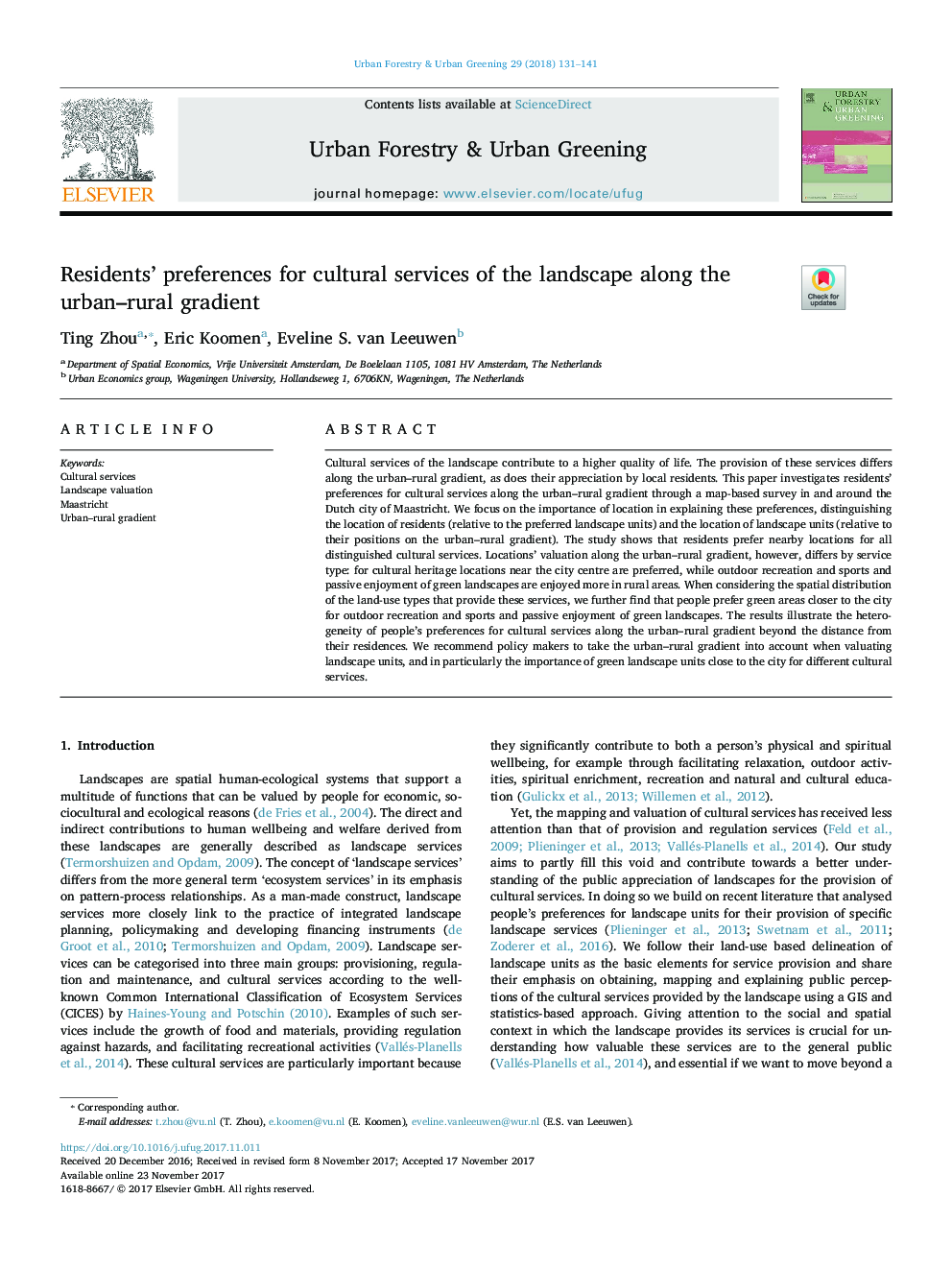| Article ID | Journal | Published Year | Pages | File Type |
|---|---|---|---|---|
| 6549442 | Urban Forestry & Urban Greening | 2018 | 11 Pages |
Abstract
Cultural services of the landscape contribute to a higher quality of life. The provision of these services differs along the urban-rural gradient, as does their appreciation by local residents. This paper investigates residents' preferences for cultural services along the urban-rural gradient through a map-based survey in and around the Dutch city of Maastricht. We focus on the importance of location in explaining these preferences, distinguishing the location of residents (relative to the preferred landscape units) and the location of landscape units (relative to their positions on the urban-rural gradient). The study shows that residents prefer nearby locations for all distinguished cultural services. Locations' valuation along the urban-rural gradient, however, differs by service type: for cultural heritage locations near the city centre are preferred, while outdoor recreation and sports and passive enjoyment of green landscapes are enjoyed more in rural areas. When considering the spatial distribution of the land-use types that provide these services, we further find that people prefer green areas closer to the city for outdoor recreation and sports and passive enjoyment of green landscapes. The results illustrate the heterogeneity of people's preferences for cultural services along the urban-rural gradient beyond the distance from their residences. We recommend policy makers to take the urban-rural gradient into account when valuating landscape units, and in particularly the importance of green landscape units close to the city for different cultural services.
Related Topics
Life Sciences
Agricultural and Biological Sciences
Forestry
Authors
Ting Zhou, Eric Koomen, Eveline S. van Leeuwen,
